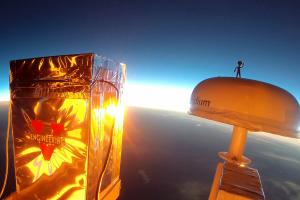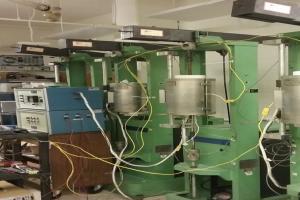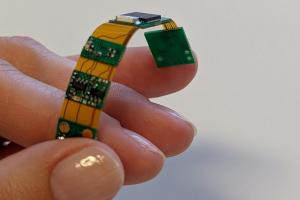Centers, Labs, Groups
In research labs and groups across UVA Engineering, our faculty and students are making discoveries and disseminating their breakthroughs across the globe.
-

Aerospace Research Laboratory
ARL's current research areas include air-breathing propulsion, hypersonic aerodynamics, optical diagnostic and measurement technique development, particle inertial separation, shock interaction with liquids and particles, and the effects of blast waves on biological systems.Capabilities- Tunnel Sensors
- PIV (Particle Image Velocimetry)
- PLIF (Planar Laser Induced Fluorescence)
- FEA (Finite Element Analysis)
- Density-Based Optical Diagnostics
- TDLAT (Tunable Diode Laser Absorption Tomography)
- External Diagnostics
-

Agnew Research Group
Agnew Research Group is focused primarily on metals analysis, including magnesium alloy formability, intermetallic behaviors, and aluminum alloy fatigue using SEM, TEM, XRD, and Neutron diffraction analysis. Also included in our army of techniques is mechanical testing. -
Ai Lab
The Ai lab specializes in protein engineering and employs interdisciplinary approaches, including biophysics, bioanalytical chemistry, chemical biology, synthetic biology, and optical imaging. -
AIME | AI for Medical Electronics
The AIME Lab develops bioelectronics assisted by artificial intelligence to advance precision health, intelligent sensors and robotics. -

ASSIST Center
The Center for Advanced Self-Powered Systems of Integrated Sensors and Technologies (ASSIST) is an NSF-funded Engineering Research Center established in 2012. ASSIST focuses on creating self-powered sensing, computing, and communication systems to enable data-driven insights for a smart and healthy world. -

Autonomous Mobile Robots Lab
This research group, led by Prof. Nicola Bezzo, develops techniques to enhance the resilience, autonomy, and safety of modern robotic and cyber-physical systems. Their work is supported by major national agencies and industry partners including NSF, DARPA, Amazon, and Northrop Grumman. -

Bajikar Lab
Our laboratory is using multidisciplinary approaches from human stem cells to computational models to understand how brain function goes awry in neurodevelopmental disorders to engineer new therapies for these diseases. -

Bart-Smith Lab
The Bio-Inspired Engineering Research Laboratory (BIER Lab) is an internationally recognized center for biologically inspired engineering research, with the primary goal of designing an autonomous robotic manta ray. Current research teams are engaged on a broad array of issues related to reverse engineering of biological systems, including: active tensegrity structures with integrated actuation, electro-active polymers (artificial skin/muscle), central pattern generator control, hydrodynamics, and hydroacoustics. -

Berger Lab
At the Berger Lab at UVA, we use synthetic biology, protein engineering, and biotechnology to solve challenges in health, sustainability, and industry. Our work spans developing enzyme- and microbe-based systems for materials synthesis, designing proteins for drug delivery and bio-remediation, engineering tools to detect and remove environmental contaminants like PFAS, studying transmembrane signaling in viruses and immune systems, and advancing sustainable processing of biomaterials such as industrial hemp. -

Biophysical Microsystems Group
The Biophysical Microsystems Group seeks to uncover precision medicine-based approaches for disease diagnostics, biomanufacturing and to screen subjects for regenerative therapies.